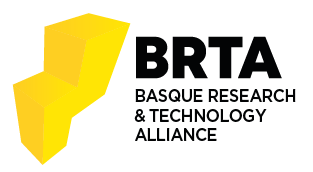A new tool for touch-free patient registration for robot-assisted intracranial surgery: Application accuracy from a phantom study and a retrospective surgical series
Autores: Francesco Cardinale Michele Rizzi Piergiorgio d Orio Giuseppe Casaceli Gabriele Arnulfo Massimo Narizzano Davide Scorza Elena De Momi Michele Nichelatti Daniela Redaelli Maurizio Sberna Alessio Moscato Laura Castana
Fecha: 01.05.2017
Neurosurgical FOCUS
Abstract
OBJECTIVE
The purpose of this study was to compare the accuracy of Neurolocate frameless registration system and frame-based registration for robotic stereoelectroencephalography (SEEG).
METHODS
The authors performed a 40-trajectory phantom laboratory study and a 127-trajectory retrospective analysis of a surgical series. The laboratory study was aimed at testing the noninferiority of the Neurolocate system. The analysis of the surgical series compared Neurolocate-based SEEG implantations with a frame-based historical control group.
RESULTS
The mean localization errors (LE) ± standard deviations (SD) for Neurolocate-based and frame-based trajectories were 0.67 ± 0.29 mm and 0.76 ± 0.34 mm, respectively, in the phantom study (p = 0.35). The median entry point LE was 0.59 mm (interquartile range [IQR] 0.25–0.88 mm) for Neurolocate-registration–based trajectories and 0.78 mm (IQR 0.49–1.08 mm) for frame-registration–based trajectories (p = 0.00002) in the clinical study. The median target point LE was 1.49 mm (IQR 1.06–2.4 mm) for Neurolocate-registration–based trajectories and 1.77 mm (IQR 1.25–2.5 mm) for frame-registration–based trajectories in the clinical study. All the surgical procedures were successful and uneventful.
CONCLUSIONS
The results of the phantom study demonstrate the noninferiority of Neurolocate frameless registration. The results of the retrospective surgical series analysis suggest that Neurolocate-based procedures can be more accurate than the frame-based ones. The safety profile of Neurolocate-based registration should be similar to that of frame-based registration. The Neurolocate system is comfortable, noninvasive, easy to use, and potentially faster than other registration devices
BIB_text
title = {A new tool for touch-free patient registration for robot-assisted intracranial surgery: Application accuracy from a phantom study and a retrospective surgical series},
journal = {Neurosurgical FOCUS},
pages = {1-7},
number = {5},
volume = {42},
keywds = {
SEEG; robotics; Neuromate; Neurolocate; frameless; epilepsy surgery; depth electrodes; image-guided surgery
}
abstract = {
OBJECTIVE
The purpose of this study was to compare the accuracy of Neurolocate frameless registration system and frame-based registration for robotic stereoelectroencephalography (SEEG).
METHODS
The authors performed a 40-trajectory phantom laboratory study and a 127-trajectory retrospective analysis of a surgical series. The laboratory study was aimed at testing the noninferiority of the Neurolocate system. The analysis of the surgical series compared Neurolocate-based SEEG implantations with a frame-based historical control group.
RESULTS
The mean localization errors (LE) ± standard deviations (SD) for Neurolocate-based and frame-based trajectories were 0.67 ± 0.29 mm and 0.76 ± 0.34 mm, respectively, in the phantom study (p = 0.35). The median entry point LE was 0.59 mm (interquartile range [IQR] 0.25–0.88 mm) for Neurolocate-registration–based trajectories and 0.78 mm (IQR 0.49–1.08 mm) for frame-registration–based trajectories (p = 0.00002) in the clinical study. The median target point LE was 1.49 mm (IQR 1.06–2.4 mm) for Neurolocate-registration–based trajectories and 1.77 mm (IQR 1.25–2.5 mm) for frame-registration–based trajectories in the clinical study. All the surgical procedures were successful and uneventful.
CONCLUSIONS
The results of the phantom study demonstrate the noninferiority of Neurolocate frameless registration. The results of the retrospective surgical series analysis suggest that Neurolocate-based procedures can be more accurate than the frame-based ones. The safety profile of Neurolocate-based registration should be similar to that of frame-based registration. The Neurolocate system is comfortable, noninvasive, easy to use, and potentially faster than other registration devices
}
pubmed = {1},
doi = {10.3171/2017.2.FOCUS16539},
date = {2017-05-01},
year = {2017},
}







